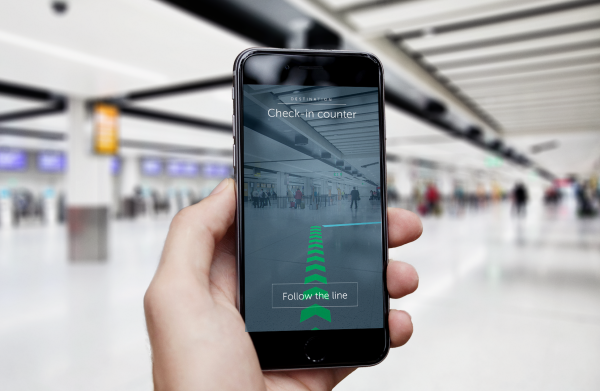(hashtag: arkit)
Overwatch Character Demo with ARKit →
Zombies with ARKit Demo →
Apple's ARKit: The World's Largest Augmented Reality Platform in the World, Overnight →
I see a common obstacle for Microsoft, Google and Facebook's entrances into AR. I expect they will all struggle to incentivize enough developers to build a vibrant ecosystem.
Google's Project Tango has been around since 2014, and it is almost universally considered a flop. Project Tango only works on specialized hardware that relatively few people own, and because of that, the software landscape is bleak.
Microsoft's HoloLens was announced in early 2015, and it's really quite impressive by all accounts. But it's not really a consumer product. The HoloLens starts at $3,000 and is marketed as a developer edition. At this point, they have too few users to truly attract developers in large numbers. Obviously, this could change dramatically if they announce a truly revolutionary consumer device.
Facebook's AR Studio is only a few months older than AR Kit, and Facebook has 2 billion users. But at this point, Facebook isn't offering a way for developers to monetize their AR Studio creations. This means it will be filled with AR "apps" that are essentially ads for companies that monetize in other ways.
In the fall, Apple will update their iPhone line and hundreds of millions of iOS devices being used today will be updated to iOS 11 and capable of running ARKit apps. This is serious incentive, and I expect to see a cascade of AR-enabled apps in the App Store at the end of the year.
This is exactly why Apple's stubborn approach to top-to-bottom proprietary/integrated technology pays off.
While everyone else gets bragging rights for beating Apple to market, Apple focuses on becoming first to mainstream adoption.
Bike Ride Map Demo with ARKit →

Indoor Navigation at Gatwick Airport via Bluetooth Beacons →
The UK’s second busiest airport, Gatwick, has opted for the latter approach to power an indoor navigation system it’s launching as part of a wider, multi-year transformation program.
It’s now finished kitting out its two terminals with around 2,000 battery-powered beacons so that digital map users will get a more accurate blue dot as they wander around. The beacon system will also be used to power an augmented reality wayfinding tool (pictured above) — so that mobile users will be able to be guided to specific locations within the terminals via on-screen arrows. The beacon system is slated as supporting positioning with +/-3m accuracy. […]
Gatwick says it will not be collecting any personal data via the beacons but says “generic information on ‘people densities’ in different beacon zones” will be used to help improve airport operations — such as queue measurement, streamlining passenger flows and reducing congestion.
This is the first time in a while we've heard of Bluetooth beacons in the wild. This is something to watch. Venues will be motivated to adopt this for more analytics, just like Gatwick. Consumers will be motivated for easier navigation. In addition to airports, think malls and Disneyland.
This is a "boring" technology that will be fundamental to augmented reality applications in the real world.
I'm eager to see if Apple unveils more progress with their four-year old iBeacons technology.
First Impressions of Samsung Galaxy S8
Played around with the S8 at Best Buy for five minutes. Here are my quick-fire first impressions:
- overall aesthetic is best in market
- screen has much more subtle curve than I remembered in past edge-screen models, in a very good way
- screen is GLORIOUS; watching video is visually immersive
- speakers suck compared to iPhone 7's stereo speakers; dulls video-watching experience
- Iris Scanner not as practical as fingerprint for unlocking; requires phone at very specific angle and eyes at specific distance. For a feature that is used an average of 120 times per day to unlock the phone, this would be a persistent annoyance.
With the iPhone 8 allegedly jumping to 5.8 inches and going bezel-less, they should refresh iOS with interface elements placed closer to the bottom for easier thumb access.
Apple should embrace the Apple Watch as a notifications hub: allow third-party developers to use custom sounds alerts and/or haptic feedback patterns with notifications.
MIT's Super-Accurate Wireless Speed Measurement Tech →
MIT’s Computer Science and Artificial Intelligence Lab has figured out a way of measuring walking speed to within 95 and 99 percent accuracy — all without requiring a wearable or other on-body measurement device. The tech uses wireless signals, dubbed “WiGait” by the research team, sent out by router-like devices within the home to track walking speed and stride length over time.
Based on my theory that Apple will use its iBeacons and Indoor Mapping to supplement Augmented Reality in the real world, I could see Apple acquiring this tech.